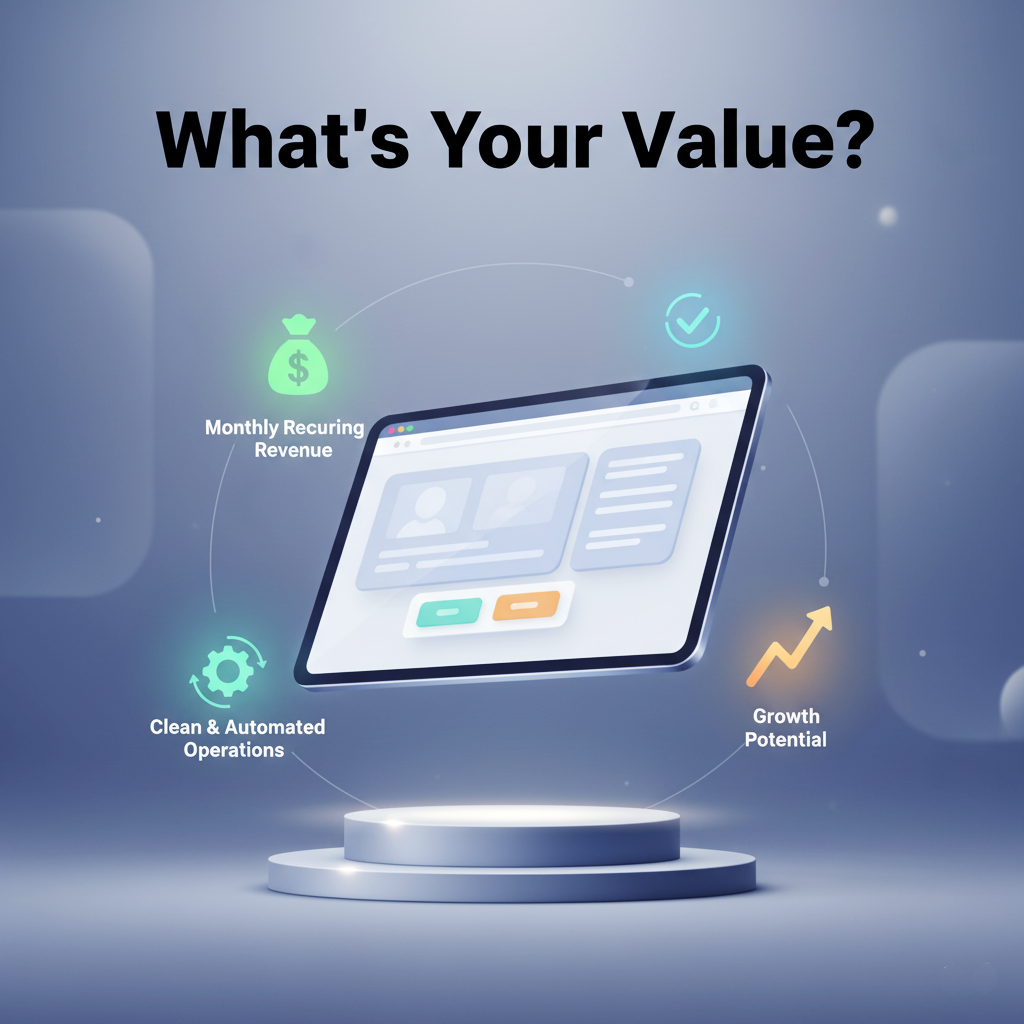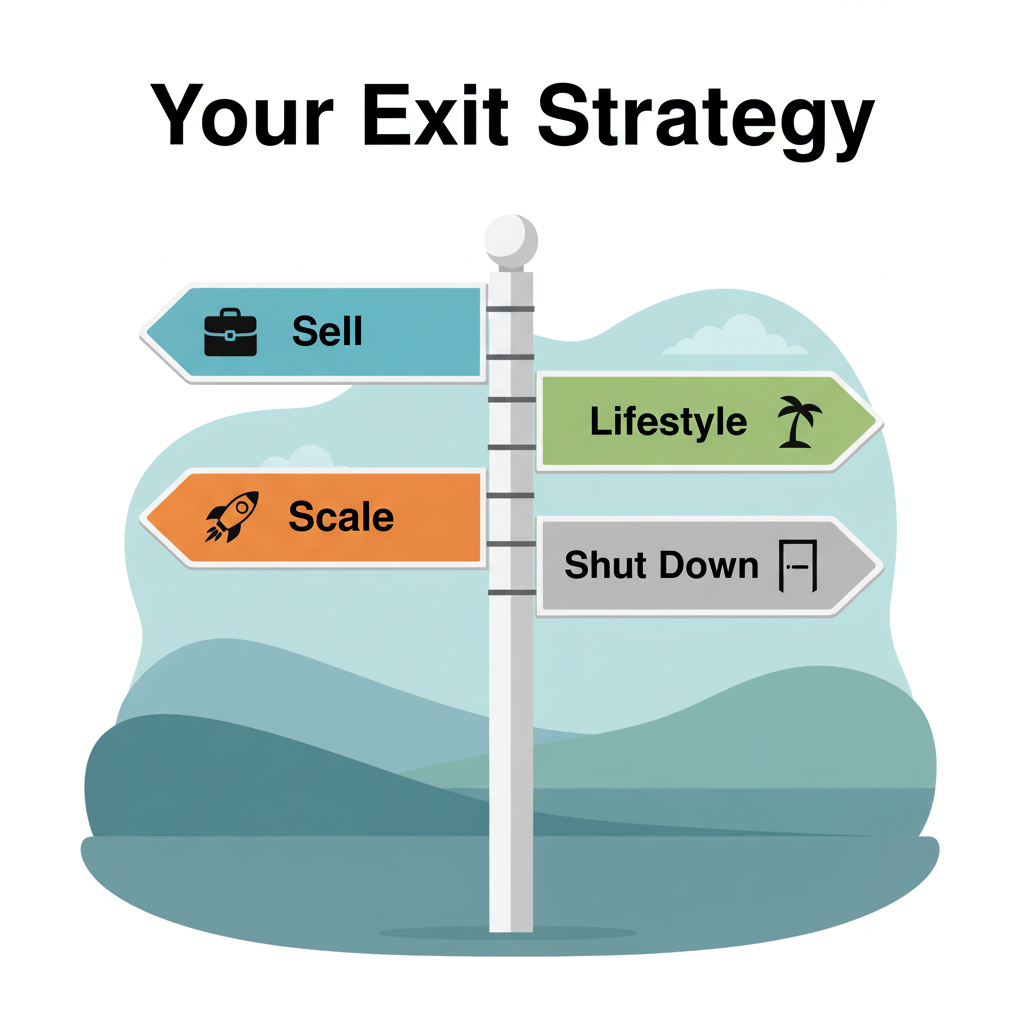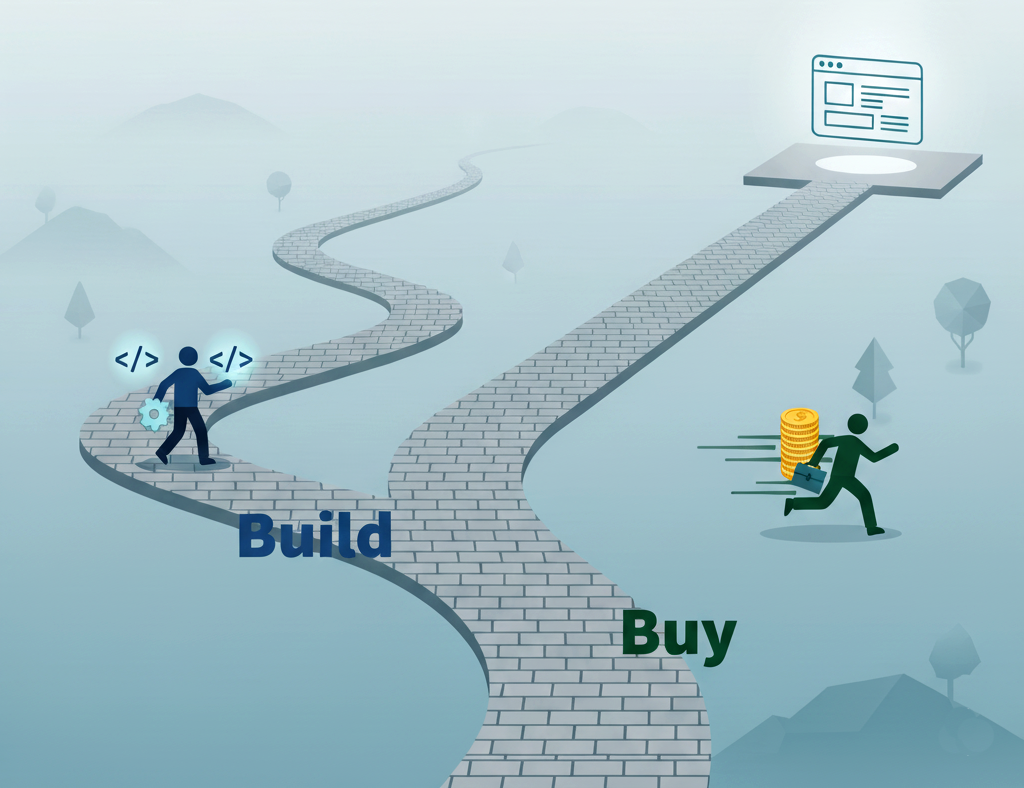The journey of a micro SaaS doesn’t have a single ending. As a founder, you’ll eventually face two big strategic questions: Should you build or buy a micro SaaS product? And once it’s successful, what’s your exit strategy? The choices you make can shape your entire experience, offering you freedom and financial reward.
Consider your long-term vision in the micro SaaS journey. This strategic planning is a core part of building a successful business, a topic covered in depth in our ultimate guide: The Ultimate Guide to Micro SaaS: From Idea to Exit.
The “Build vs. Buy” Decision
The question of whether to build vs. buy a micro SaaS is a fundamental choice. Each path has its own set of pros and cons, and the best option depends on your resources, timeline, and goals.
- Building Your Own Micro SaaS: This is the most common path. You start with an idea, create the product from scratch, and launch it yourself. The main advantage is that you have full control over every detail. You can build the exact product you want, tailor it to your niche, and learn valuable skills along the way. However, this path requires a significant investment of time and effort, and there’s no guarantee the product will be successful. The initial development cost is a factor in this decision. As building a product can be a big investment of time and money, you should review our guide on Micro SaaS Development Cost to understand the potential expenses.
- Buying an Existing Micro SaaS: This is a less common but powerful option. You acquire an existing business that already has a product, customers, and revenue. The biggest benefit is instant revenue. You get a proven product and skip the long, risky building phase. However, buying requires a higher upfront cash cost, and you may inherit a product with technical debt or hidden problems. You also have less control over the initial design and decisions.
The right choice comes down to your personal situation. If you have more time than money and want full creative control, building is likely the way to go. If you have the capital and want to jump straight to the revenue stage, then buying an existing micro SaaS might be the smarter choice.
Selling a Micro SaaS Business: Your Exit Strategy
For many founders, the ultimate exit strategy for a micro SaaS is to sell it for a profit. Selling your business can be a way to cash out, fund a new venture, or simply move on to something new.
What Makes a Micro SaaS Valuable?
- Stable Monthly Revenue: The most important factor a buyer looks at is your Monthly Recurring Revenue (MRR). A predictable, consistent income stream makes your business attractive and allows a buyer to forecast its future.
- Low Churn: Buyers want to see that your customers are happy and staying. A low customer churn rate proves your product provides real value and has a loyal user base.
- Clean and Automated Operations: A business that runs smoothly with minimal manual work is far more appealing. If you’ve automated things like onboarding and support, your business is a more valuable asset to a potential buyer.
- Growth Potential: A buyer wants to see that your business can still grow. You might have a great product, but if you’ve already exhausted all marketing opportunities, it’s less valuable.

Your product’s growth and metrics influence its saleability. We discuss this in more detail in our guide on: The Most Important Metrics to Track for Micro SaaS Success.
How to Sell Your Micro SaaS
The easiest way to sell a micro saas business is to use an online marketplace or a broker. Websites like MicroAcquire and Flippa are designed to connect sellers with buyers, streamlining the process of acquiring a micro saas. You can also reach out to competitors or individuals in your niche who might be interested in buying your product to grow their own business.
Other Exit Strategies for a Micro SaaS
Selling isn’t the only option. Many founders choose a different kind of exit, one that gives them freedom without a one-time cash payout.
- The Lifestyle Business: This is a popular exit strategy for a micro SaaS that doesn’t involve selling. The founder keeps the business running on their own, allowing it to generate a steady, reliable source of passive income. They might spend only a few hours a week on it, using the revenue to support their life and other pursuits.
- Scaling It Up: You might decide your micro SaaS has the potential to be a full-fledged startup. This involves growing the business, hiring a team, and turning it into a much larger company. This path requires more capital, time, and effort, but the potential rewards are much greater.
- Shutting It Down: It’s important to recognize that sometimes, shutting down is the best decision. If the product isn’t working, or if your passions have changed, it’s okay to close the business and move on.

Final Thoughts on Your Exit Strategy
Every founder has a different definition of success. For some, it’s a big acquisition, while for others, it’s the freedom of a profitable lifestyle business. Whatever your goal, having an exit strategy for a micro SaaS in mind from the start can help guide your decisions. By building a valuable, well-run business, you create choices for yourself, whether that choice is to sell, to scale, or to simply enjoy the fruits of your labor.

